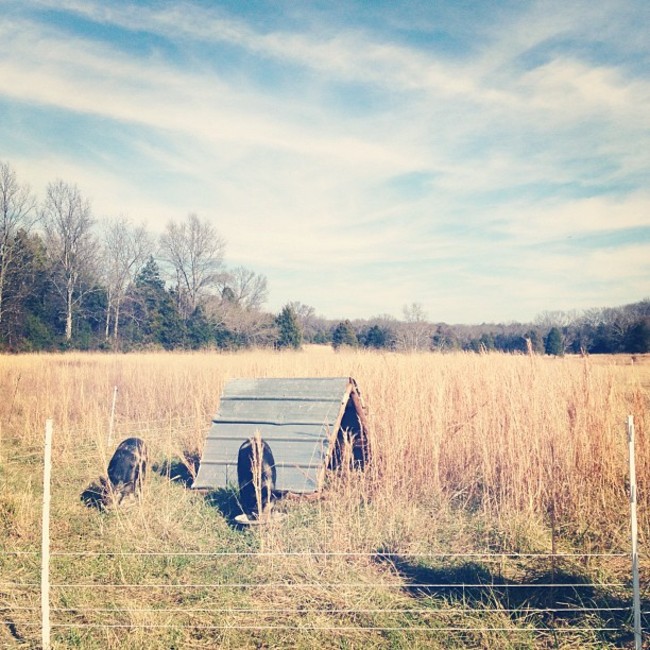

You've probably noticed that we're big fans of rotational grazing. The goats, the cows, and now the pigs are all rotated around our property inside their own electric fences. While gaining in popularity, this method of livestock management is very uncommon. Yet it makes a lot of sense, if you have the time and resources to make it happen.
Rotational grazing ensures that the animals are not living and eating amongst their own excrement. It also ensures they have fresh grass to eat everyday. In addition, the land benefits by getting some rest in between grazing periods. The farm (and the farmer) benefits by having healthier and happier animals. It's an all around winner, but it takes the time and motivation to make it happen.
Rotationally Grazing Pigs on Pasture
Rotationally grazing the pigs makes a lot of sense. Those little rooters will get their snouts running and completely destroy perfectly good pasture in no time flat. They have to be moved frequently and the land needs a long time to rest and recover.
Currently, our two gilts are rotating through new pasture every 2-3 days. They are allocated a small parcel of pasture that is dense with unwanted forages (i.e. broomesedge and other less-nutritious 'weeds'). As you can see in the pictures, they literally eat everything in sight. People seem to be surprised that a pig would clean it up that well.
First, the pigs start with the roots. They slowly unearth the entire plant and then proceed to munch down the roots. Next come the stems and leaves. After a couple days the paddock will turn into a mud puddle, especially if we get a little (or a lot) of rain.
Moving the Pigs to the Forest
We don't plan to keep them out on the pasture permanently, however. Eventually the gilts will make their way to the forest where the rotations will be longer (probably around 3 weeks) and the paddocks will be larger. They'll still have access to some pasture, they just won't be out in the middle of the fields like they are now.
Today's pasture rotation is more of an experiment. I want to see how much damage they really do and in how short of a time period. If we ever want some land turned I'm not going to call in the tractor and the plow. I'm going to call in the pigs. If we get a little rain I think the two gilts could tear up and acre in less than a week. With more pigs we could easily till a meaningful amount of our pastures over the course of a month. Fatter pigs, limited maintenance, petroleum-free, naturall tillage.
Until then, however, they'll find home in the woods. The forest creates food for the pigs in the form of mast (nuts). I took a long walk through their prospective paddock earlier today and the floor was full of hickory and acorn nuts. The dogs do a good job keeping the squirrels away, so plenty of food remains. Right now we have close to 20 acres of un-used forest area that will be perfect for the piggies. Tomorrow I'll break out the machete and carve some paths for fencing.



